In the 1920s and 1930's there were several radios that went by the name "Masterpiece". The term would seem to indicate the best of the best at least as much a one individual or manufacture was concerned. There was the exceedingly common Freshman "Masterpiece" which was rather average as far as 1920s TRF radios go. It was a good radio, but that was about it. A better name would have been, Freshman Average Radio. Then there was the Parker McCrory Masterpiece 733 From 1937 (See: https://www.russoldradios.com/unique-radios.html 3rd entry) which was a really nice 30's battery radio. It was way above average, but a "masterpiece"? Well maybe. And then there was McMurdo Silver, a guy that intended every one of his radios to be a masterpiece. By the time he got to his 5th version, the Masterpiece V, I would say the name fit very well.
In the photo above note the chromed pedestal on the V and VI Super Giants. They were not built that way and had been chromed along with a lot of the other parts as a matter of taste. Two were to be kept and two more were to be sold along with the matching radios. The V is on top with two VIs below.
There seems to have been a lot of changes around the addition of a "MIC" circuit along with the "Phono" input for the VI. (left side of chassis)
Another interesting thing to note at this point is that the tubes on a MSMV are all metal by Raytheon with the exception of the two 5Z3s. On the MSMVI all of the tubes are glass except the two 6L6s which may have also been glass on some units (ST bulb). At the time of manufacture the only difference between the 5Z3 and 5U4G was the base.
There are 3 more tubes on the MSMVI receiver chassis but 2 less on the PS/amp chassis for a gain of 1 over the MSMV.

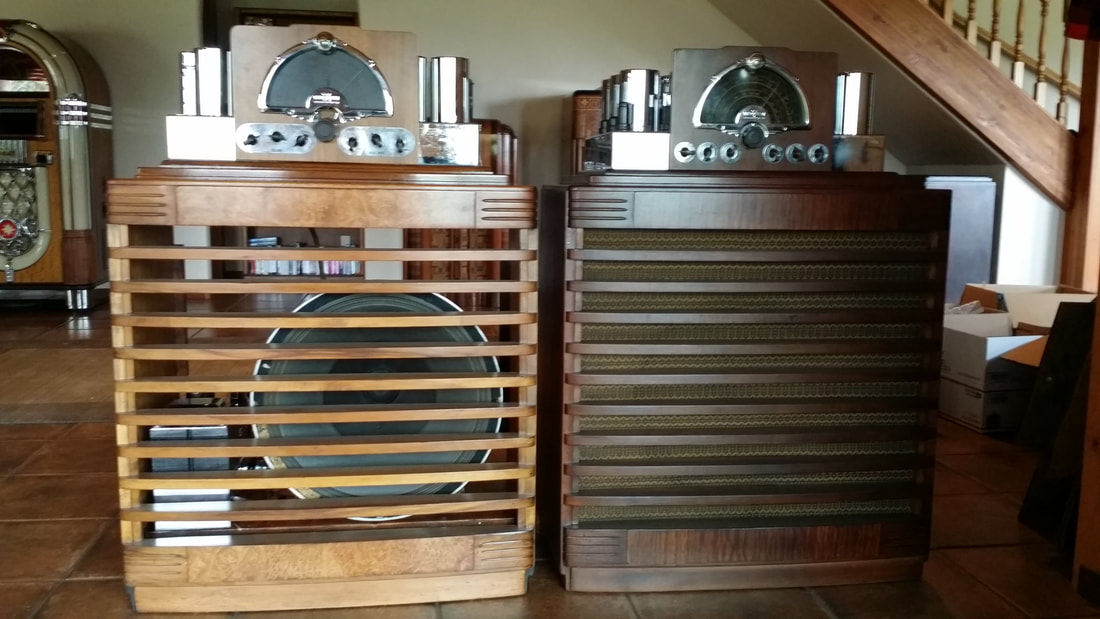
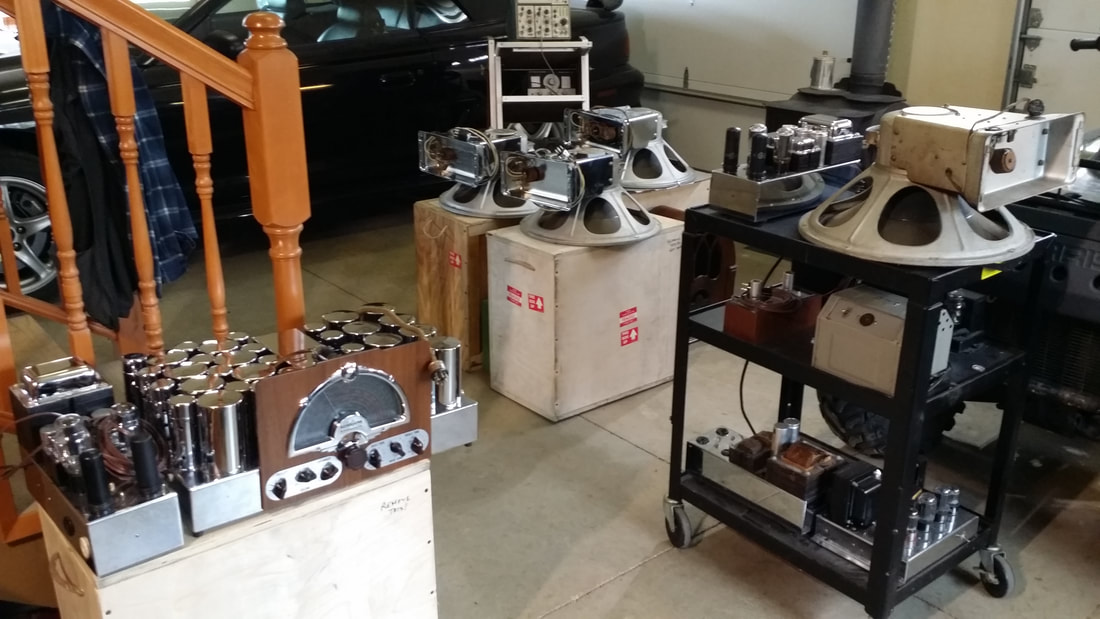
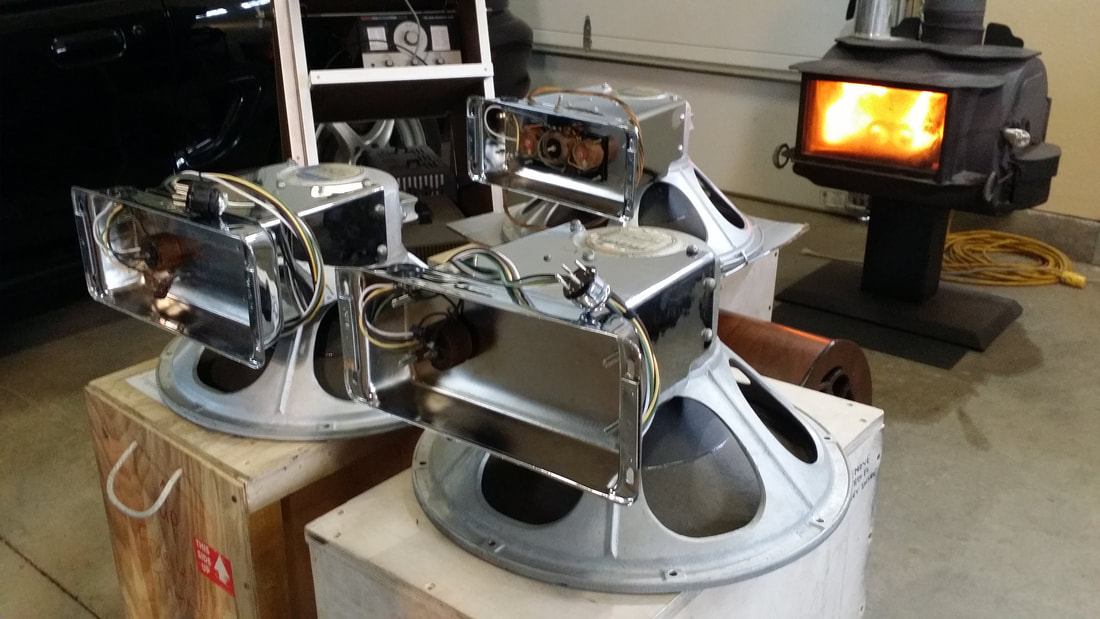
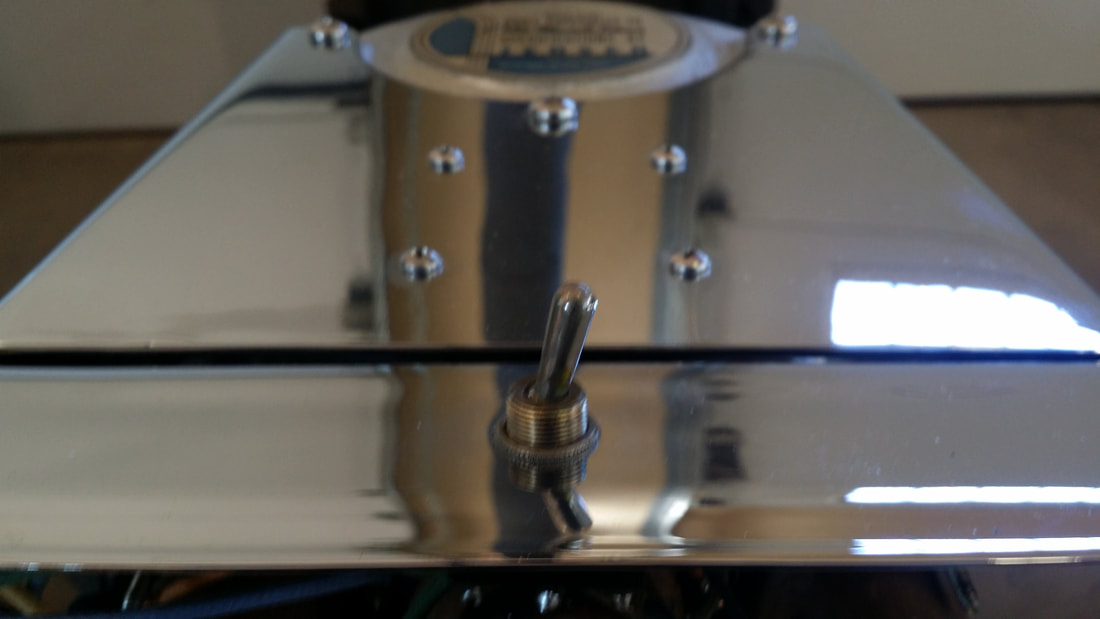
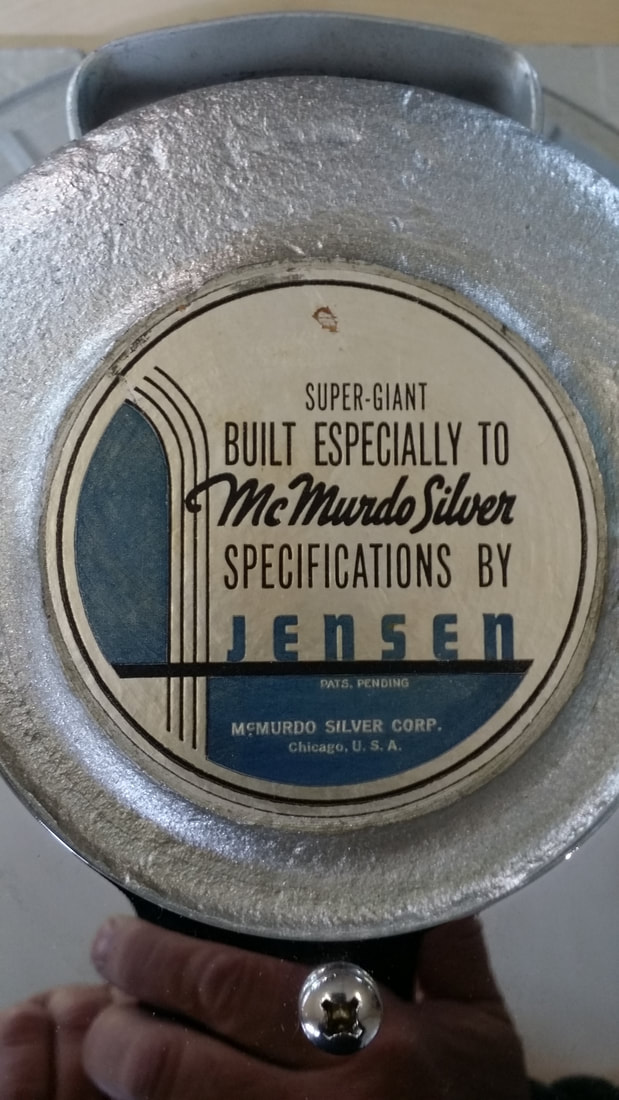
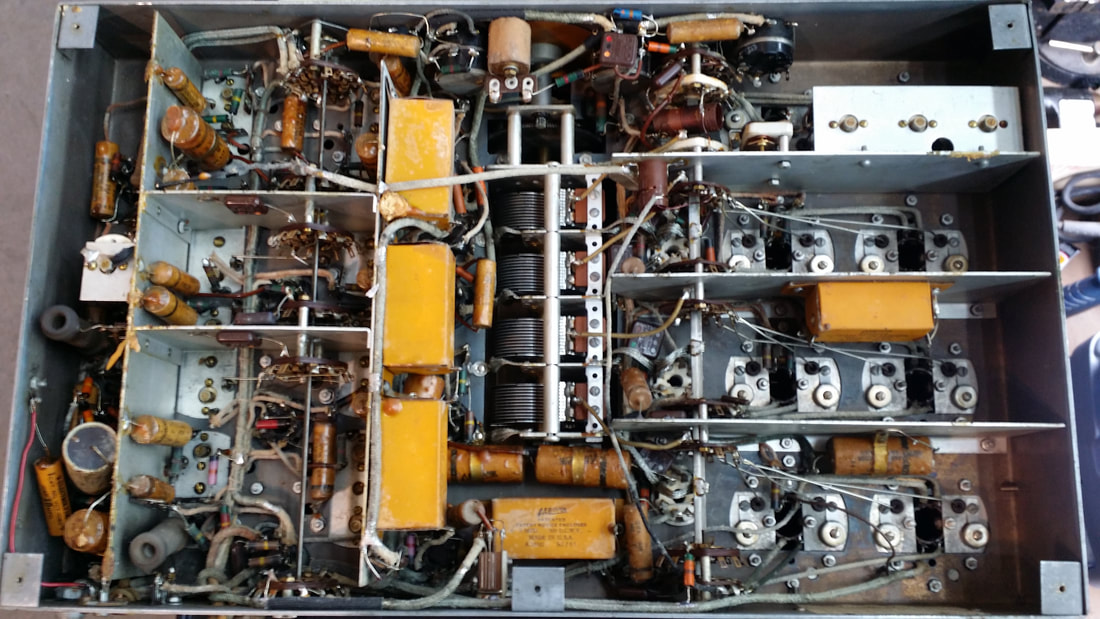
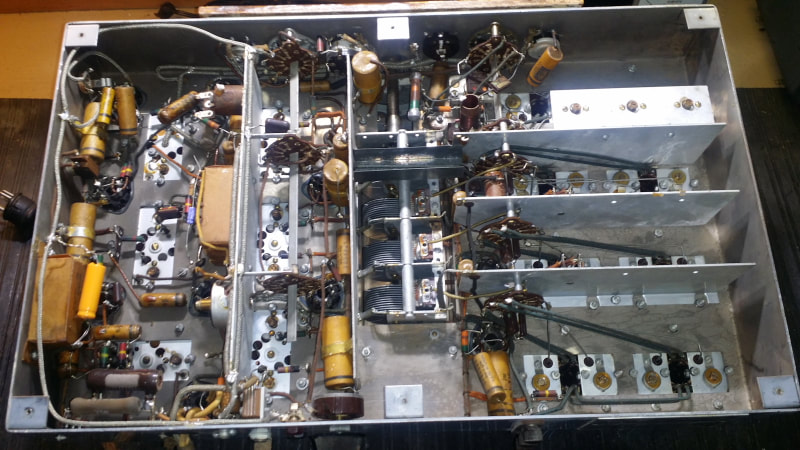
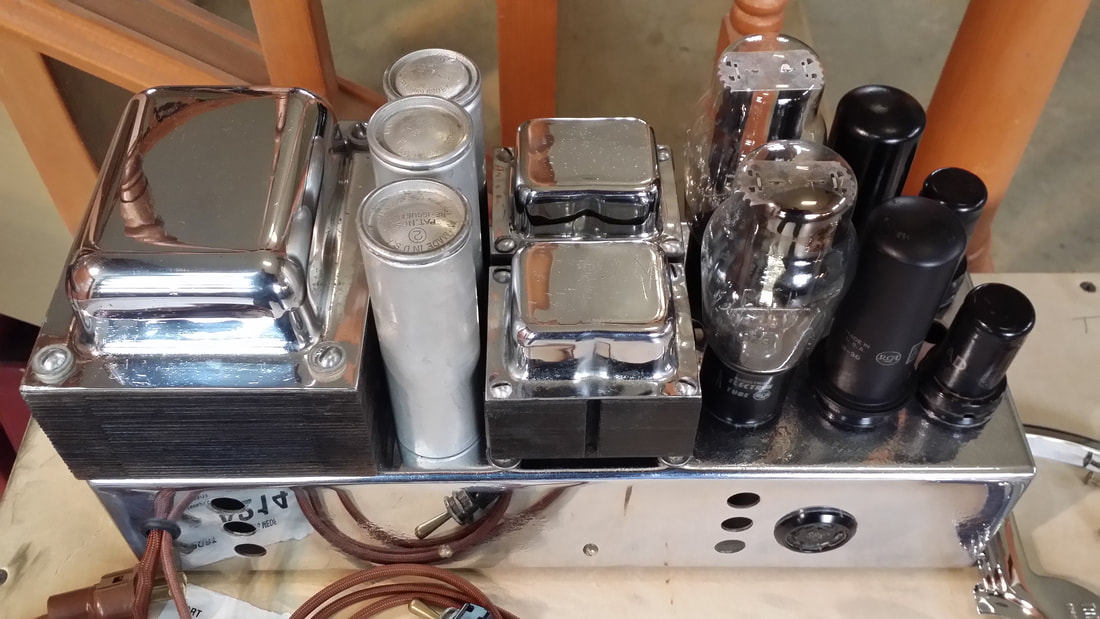
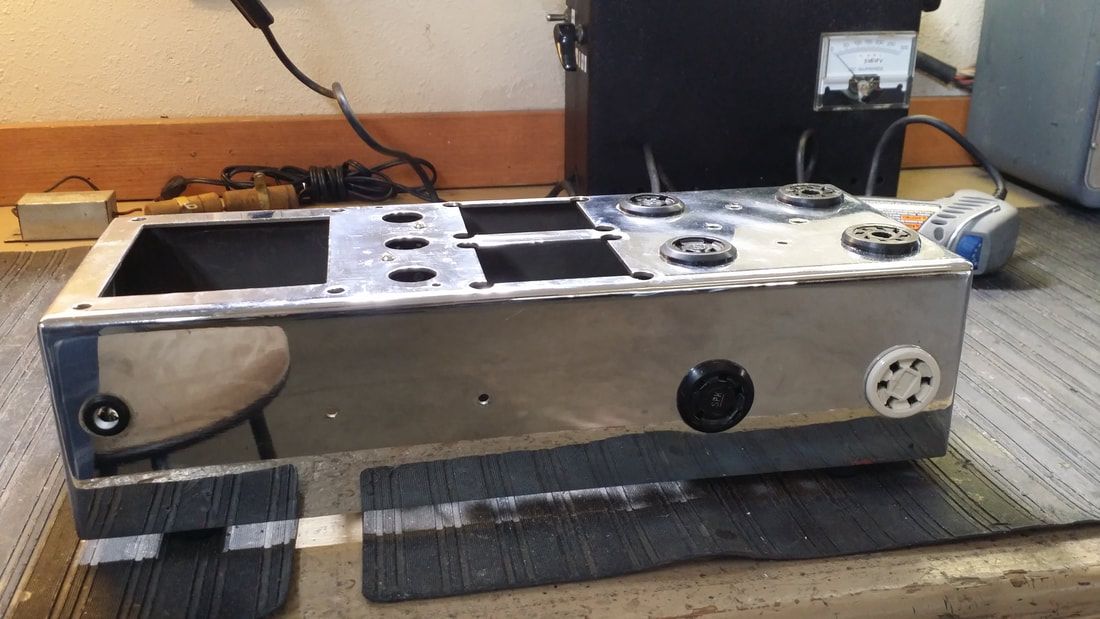
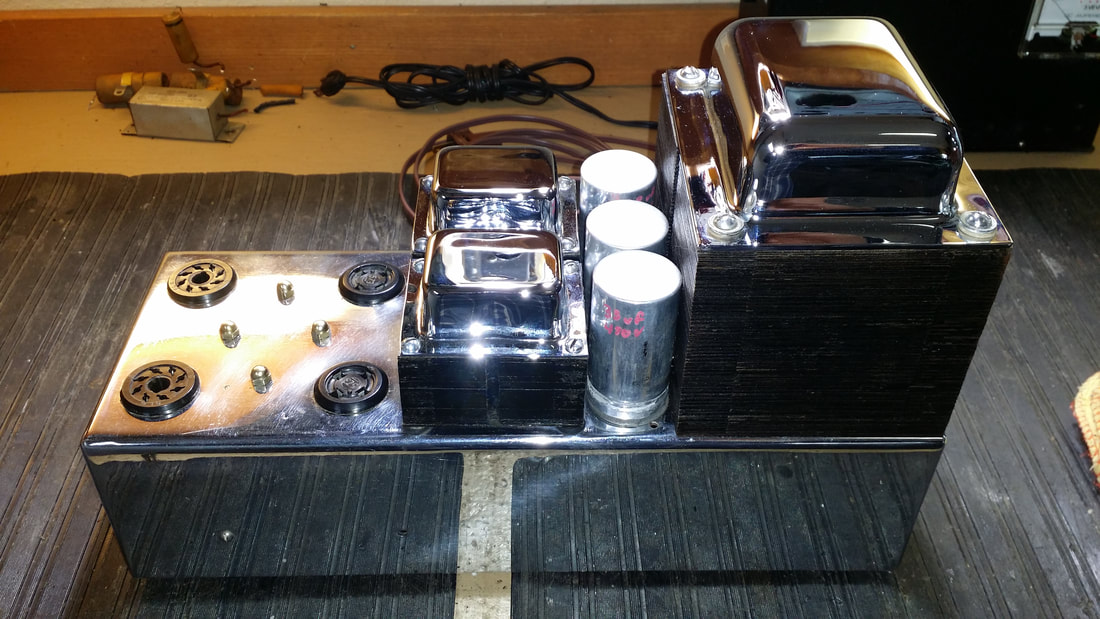
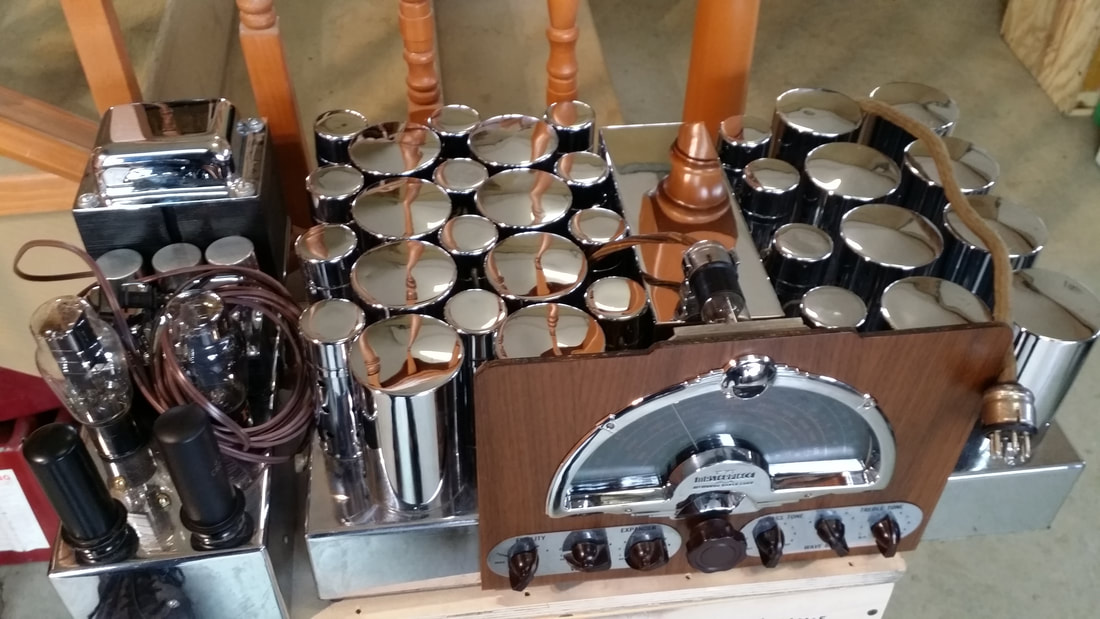
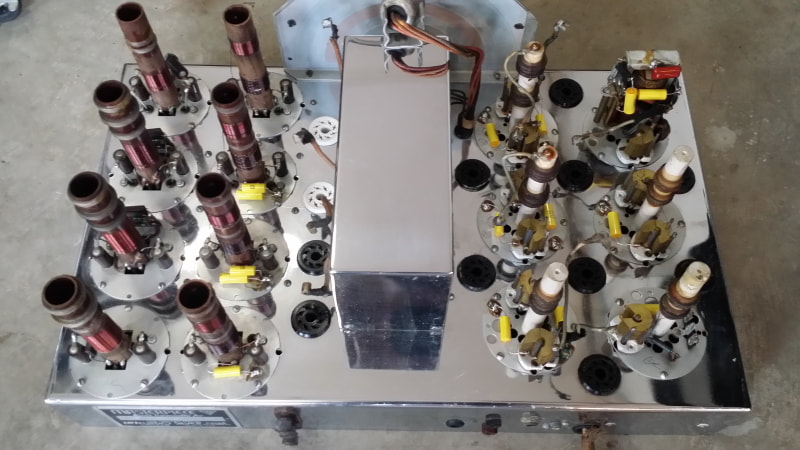
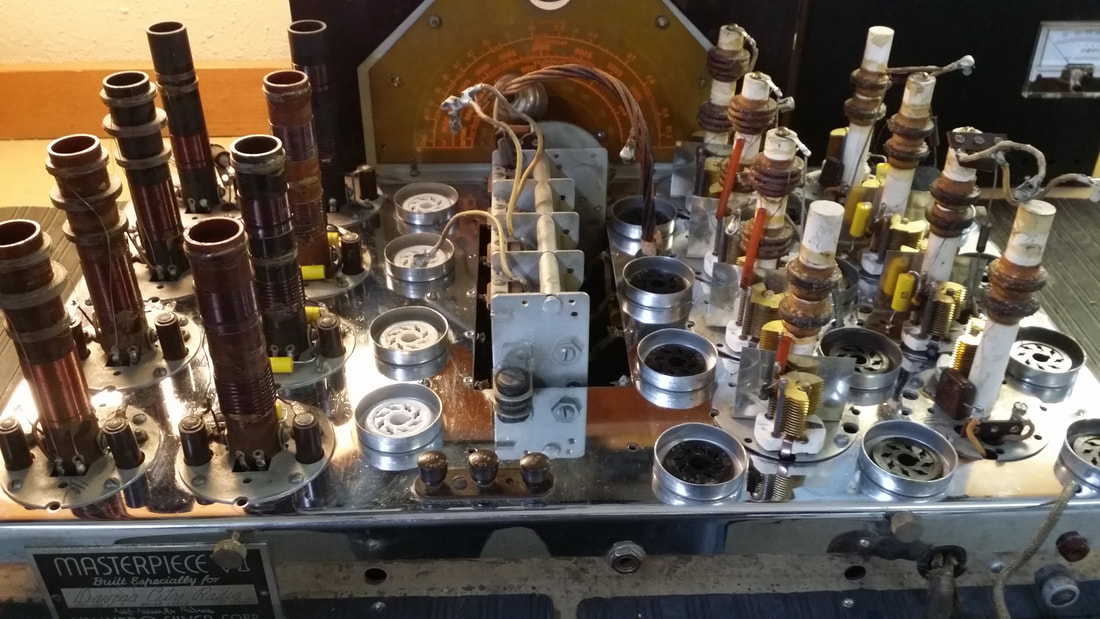
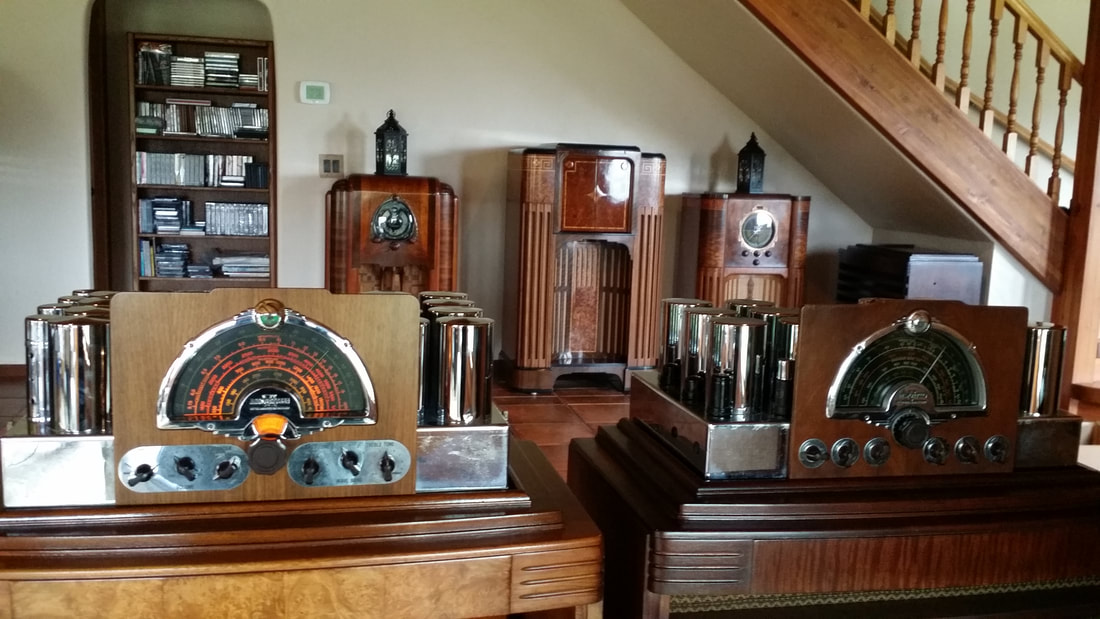

 RSS Feed
RSS Feed